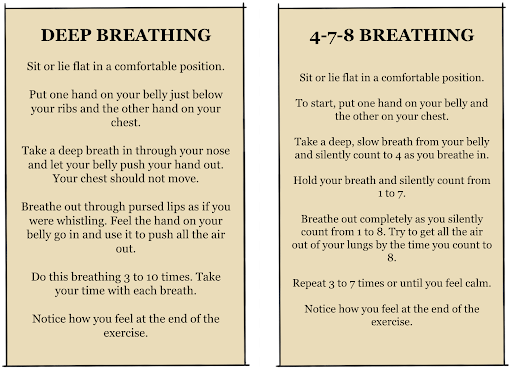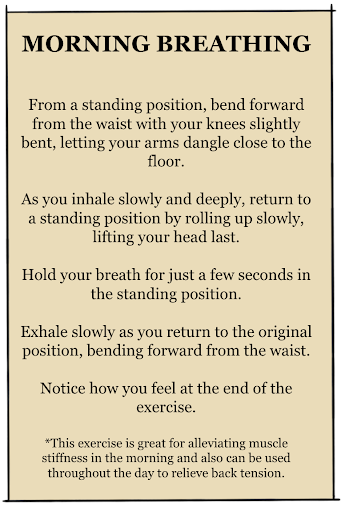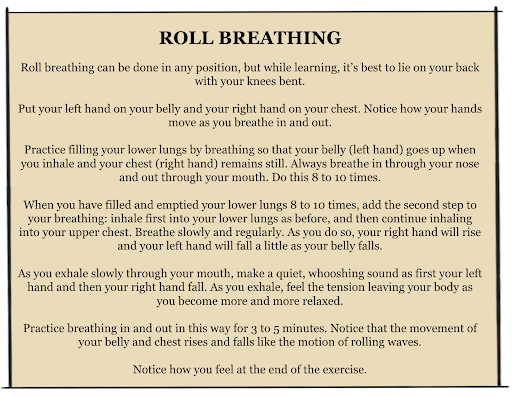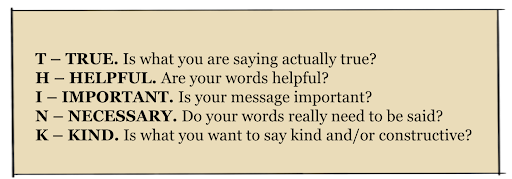A Dancers Guide to Communication

Marisa Ricci | @mariccikova | Photo by: Giorgia Gaeta | Toronto, Canada | 6 minute read
There are many nuances that challenge our ability to effectively communicate, but understanding how we communicate is the first step towards improvement.
With input from experts Dr. Stephen Byars, a Professor of Clinical Business Communication, Dr. Mary Andres, a Licensed Clinical Psychologist and an Associate Professor of Clinical Education, and Dr. Toni Serafini, an Associate Professor and a Registered Psychotherapist, the intention of this research is to put forward well-informed, actionable suggestions on how best to effectively and efficiently communicate in an array of situations dance artists may find themselves in.



We face communication in every moment, whether it be verbal, non-verbal, written, visual, or listening. As dance artists, we naturally spend a lot of time expressing through movement, and perhaps not enough time focussing on the other forms of communication. Whether you are speaking to your colleagues, your director, your dancers, your students, your friends, or whomever else you may be interacting with, being mindful of how to communicate effectively will have a huge impact on your daily interactions.
Due to communication taking on several forms, depending on the context of the exchange, the “rules” of communication can slightly differ.
Learning how to balance the inherent elements of communication listed below will not only help us to adapt our delivery and receipt of information, but will ultimately improve the efficacy of our communication.
Breathing
Dr. Andres staunchly advocates that breathing makes up 50% of our communication and that it is therefore imperative to manage our breathing prior to engaging in a face-to-face conversation, or indeed any type of communication.
Our stress responses can undermine our ability to communicate effectively, however, deep intentional breathing can almost immediately deactivate debilitating responses.1 Deep breaths oxygenate the frontal lobes of our brain and enable us to have optimal conversations and to inject diffusing qualities like humor into our conversations.
On the other hand, shallow breathing into our chests only activates the most primitive parts of our brain that activate the fight, flight, or freeze response in situations where we may perceive a threat – whether it actually exists or not.
The way we breathe affects our entire body and there are many breathing techniques that we can implement in order to reduce stress and anxiety. Here are four recommended breathing techniques:



Listening
Learning to listen is one of the most common areas of development when it comes to effective communication, and though it may sound counterintuitive, good listeners are the best communicators.
Making a conscious effort to not only hear, but truly listen to what another person is saying is a lot harder than it sounds, especially when we’re not only listening to the words being spoken. Dr. Mary Andres explained that we’re listening with both our ears and our eyes, which means verbal communication can rarely be separated from non-verbal communication. Dr. Andres continues that when we’re listening holistically, we’re taking in all the data and we therefore stand a much better chance of having a functional conversation.
Here are two effective types of listening:
- Active Listening
- With view to ensuring the speaker feels heard and understood, active listening refers to being present while giving the speaker focused and undivided attention.
- Withholding advice, judgement, or criticism, an active listener will give the speaker verbal and non-verbal acknowledgements that demonstrate an understanding of what the speaker has said.
- Verbal affirmations can include paraphrasing, asking questions, or responses like “Uh huh,” “Sure”, or “Mm-Hmm”, while non-verbal affirmations could include a nod of the head, maintaining eye-contact, or keeping an open body posture.
- Reflective/Empathetic Listening
- While reflective listening comprises the same components of active listening, it is a more specialized type of listening in which the listener pays close attention not only to the apparent feelings of the speaker, but also to the feelings and meanings behind what is being said.
- Without mocking, the listener makes an effort to mirror the body language, posture, and facial expressions of the speaker and withholds actions that would prevent the speaker from fully expressing themselves, such as judgement or attempts at problem solving.
- As a result of this, the listener is able to reflect back to the speaker to clarify and/or demonstrate understanding of the message.
A listening technique to avoid:
- Passive Listening – Typically a one-sided form of communication, passive listening does not entail sustained attention or verbal or non-verbal acknowledgement. A contemporary example sighted by Dr. Andres would involve the listener interacting with their phone or computer whilst the speaker is talking.
With view to engaging in a meaningful dialogue, active and/or reflective listening is always advised.
Verbal and Non-Verbal Awareness
According to Dr. Stephen Byars, face-to-face communication is the very best form of communication, not only due to the great significance of being perceptive to another person’s body language – a form of non-verbal communication – but also due to the plethora of verbal and non-verbal nuances that simply can’t be replicated in an email, for instance.
The intricate characteristics of verbal communication play an essential role in facilitating effective communication. Vocal characteristics include cadence, inflection, intonation, pace, pitch, tone, and volume – all of which are mostly activated subliminally and reflexively, though should still be considered carefully when we’re communicating.
Among other cues, when considering what constitutes non-verbal communication, consider facial expressions, gestures, posture, touch, breathing, sighing, and the distance between ourselves and who we’re talking to.
Regardless of whether you’re the speaker or the listener, body language should be reinforcing what’s being said and not contradicting it. However, with non-verbal communication often being subconscious, the behaviour often reveals the truth about how one feels.
Paraphrasing & Understanding
Paraphrasing is a great, but unfortunately under-used technique. Not only does paraphrasing ensure that the person you’re speaking to feels understood, it clarifies YOUR understanding of what was said!
We are fundamentally motivated by our need to feel heard and if there’s any inkling or indication that the person or people we’re speaking with aren’t listening, we’re inevitably triggered.
Similarly, when we feel we’ve been misheard, we become invested in the exchange in a different way. We become focused on ensuring we’re heard at all costs, even if that means talking over a person or listening to respond rather than to understand.
If you begin the conversation with a sincere desire to understand the other person’s point of view, it will ultimately frame how you respond – and in a positive way. Clarifying the message that was actually intended to be communicated could save a lot of unnecessary back and forth.
Implementing the following suggestions from the very beginning of a communication will also open up room for a genuinely better exchange. It should also have the effect of making things far less emotionally charged, which in turn, will ensure the conversation remains rational.
As the listener, paraphrasing back what you think you heard, will, at the bear minimum, enable the speaker to do one of two things:
- Let them know you’ve actually been listening, thus giving them the opportunity to hear your perception of what they’ve said.
- Allow them to clarify anything you may have misheard, thus fostering clearer, more effective communication.
Try asking the following questions to express your genuine desire to understand:
- “Okay, let me know if I am hearing you correctly…”
- “So these are the key pieces you’ve identified…”
- “Right, so these are the challenging areas…”
- “I want to make sure I understand what you’re asking or what your concerns are…”
Follow-up with clarifiers:
- “Am I hearing correctly?”
- “Am I on point?”
- “Did I miss anything?”
- “Let’s see if I’m following accurately…”
- “Did I get all of that?”
Paraphrasing any responses is also advised in a group setting. Try asking non-judgemental questions like:
- “Okay, so just to make sure we’re all clear, did we understand correctly when you said…?”
- “Am I paraphrasing correctly when I say…”
- “When you said…were you saying that…?”
REMEMBER: Give the individual the opportunity to have clarity or save face if their response has been misunderstood and paraphrase anything that may be unclear so there is a shared understanding.
Clarity & Conciseness
Regardless of the medium, being precise and concise is usually the best way to go when it comes to effective communication and there are two easy ways we can ensure we do this:
- Activate your “internal pause button”.2 Our internal pause button is a small but significant reminder that it’s okay to take a moment before responding. Just a few extra seconds could help you make a better decision on how to proceed.
- Develop the healthy habit of thinking before you speak. This will enable you to effectively plan your communication so that the delivery of your message is tactful, clear, and concise. The “THINK Concept” is a great tool to help train your brain to think before you communicate.3

One of the obvious places we tend to go off on a tangent is in emails. While emails are beneficial when it comes to referencing, Dr. Byars points out that one of the key problems with emails is that most of them are too long! Many of us ramble and in doing so, we bury the key messages of the communication, making the objective unclear. So, before you send that next email, try taking a moment to pause and think before pressing send!
Humanity
At the heart of it, effective communication is about connection and irrespective of the setting or circumstance, what will always connect us is our humanity. Yet, more often than not – especially in a professional environment – the concept of hierarchy often replaces the reality of our shared human experience.
Dr. Byars emphasised that at the very least, we ensure we respect each other’s humanity and lay the foundations for a genuine commitment to a successful conversation.
It’s very easy to get caught up in our titles, how we’re perceived by decision-makers, unhealthy competition at the expense of colleagues, and highly ineffective robotic conversations that are had as a means to an end. A lot of it is done subconsciously.
With this in mind, Dr. Andres suggests consciously carving out time to remind ourselves of the following key elements that should be present in any form of communication, in order to keep our humanity intact:
- RESPECT
A little respect goes a long way and while you should not accept disrespectful behaviour, maintaining respect, even in tough situations where your views or opinions are being challenged, is a reflection of your humanity. - CLARITY
Confirm your intended message was received or that you understood a message correctly to mitigate any misunderstandings, which in turn improves transparency, trust, engagement, and ultimately, connection. - CURIOSITY
Less judgement, more curiosity! Whether you’re the person asking questions or the person being asked, communicating with curiosity improves engagement, understanding, and connection. - PATIENCE
Have the ability to listen intently and patiently. This reflects self-control and humility over impulsive reactions and interruptions.
Sources
MARY ANDRES is an Associate Professor at the USC Rossier School of Education. Andres received her doctorate from Wright State University and is a licensed clinical psychologist. She has a private practice specializing in couples work and sexuality concerns. Some of her previous work includes working as the psychologist for Semester at Sea, as an advisor with the Cannes Film Festival’s internship program through the American Pavilion, and in University Counselling Services at USC. Among many skills, Andres has expertise in development, psychotherapy, substance abuse treatment, and communication skills.
STEPHEN BYARS is an Associate Professor of Clinical Management Communication at the USC Marshall School of Business. His expertise include topics such as business and professional ethics, effective communication skills, employee relations and human resources, oral and written business communication, and faith in the workplace.
TONI SERAFINI is an Associate Professor in the Department of Sexuality, Marriage, & Family Studies at St. Jerome’s University. She received both her PhD in Family Relations and Human Development as well as her MSc in Couple and Family Therapy from the University of Guelph, and her BA in Psychology from St. Jerome’s University/University of Waterloo. Her expertise and research includes identity formation, communication and counselling skills, introductory psychology, and relationship formation.
References
(M. Andres, personal communication, November 20, 2020).
(S. Byars, personal communication, November 5, 2020).
(T. Serafini, personal communication, December 5, 2020).
1 Publishing, H. (Ed.). (2015, January). Relaxation techniques: Breath control helps quell errant stress response. Retrieved January 17, 2021, from https://www.health.harvard.edu/mind-and-mood/relaxation-techniques-breath-control-helps-quell-errant-stress-response
2, 3 C. (2018, November 08). The Importance of Thinking Before you Speak. Retrieved January 04, 2021, from https://www.cookshillcounselling.com.au/the-importance-of-thinking-before-you-speak




